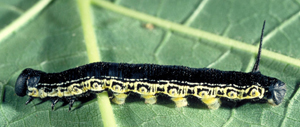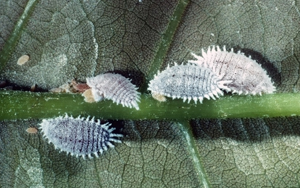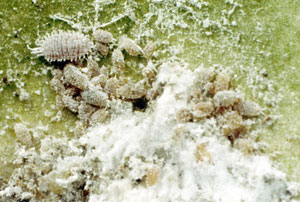Leaf Feeders

John Ghent, John Ghent, Bugwood.org

Lee Townsend, University of Kentucky
Sap Feeders

John A. Weidhass, Virginia Polytechnic Institute and State University, Bugwood.org
Aphids produce large amounts of a sugary liquid waste called "honeydew". The honeydew that drops from these insects can spot the windows and finish of cars parked under infested trees. A fungus called sooty mold can grow on honeydew deposits that accumulate on leaves and branches, turning them black. The appearance of sooty mold on plants may be the first time that an aphid infestation is noticed. The drops can attract other insects such as ants, flies, and wasps that will feed on the sticky deposits. For more information, see Entfact 103.

J.A. Davidson, Univ. Md, College Pk, Bugwood.org

Clemson University - USDA Cooperative Extension Slide Series, Bugwood.org